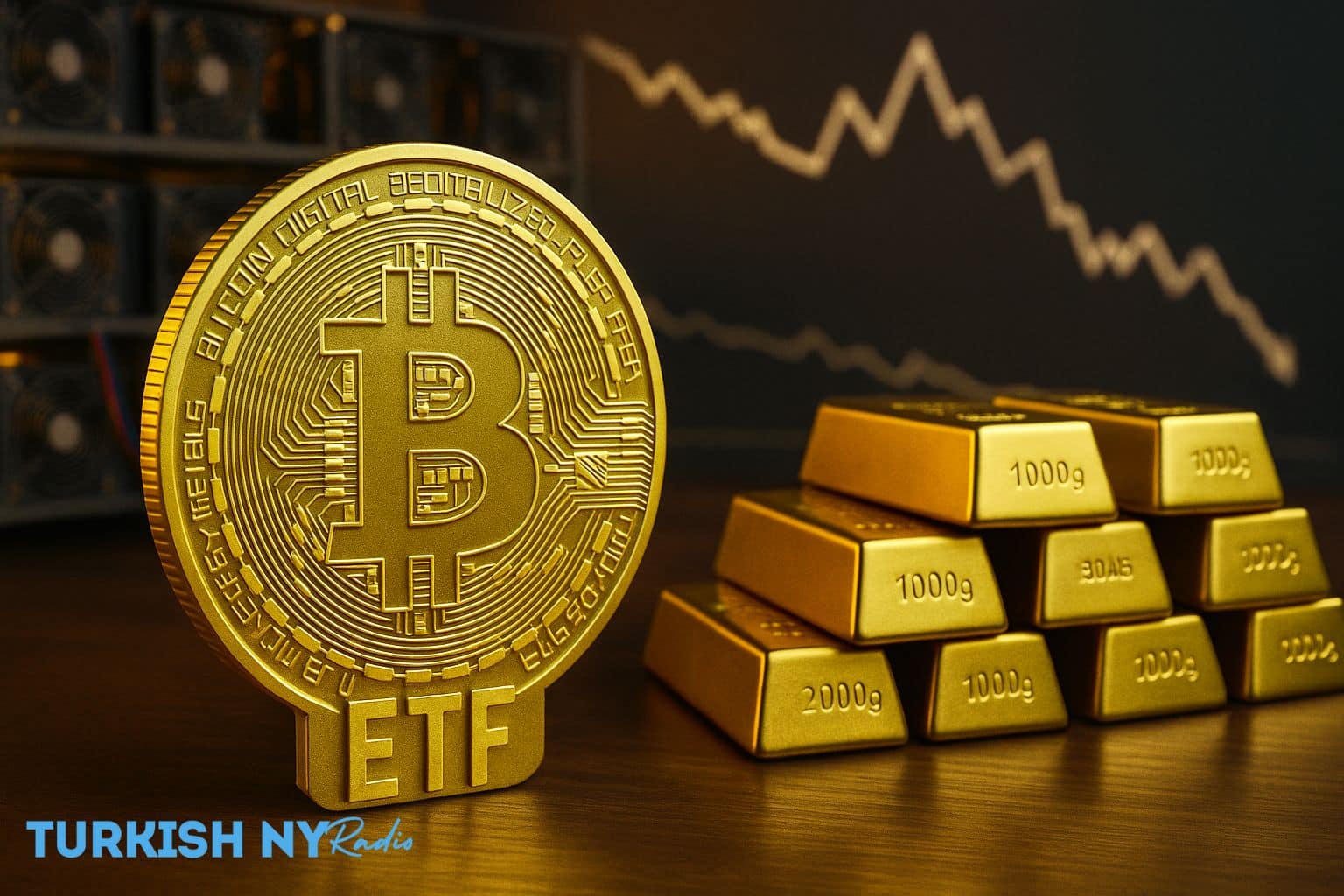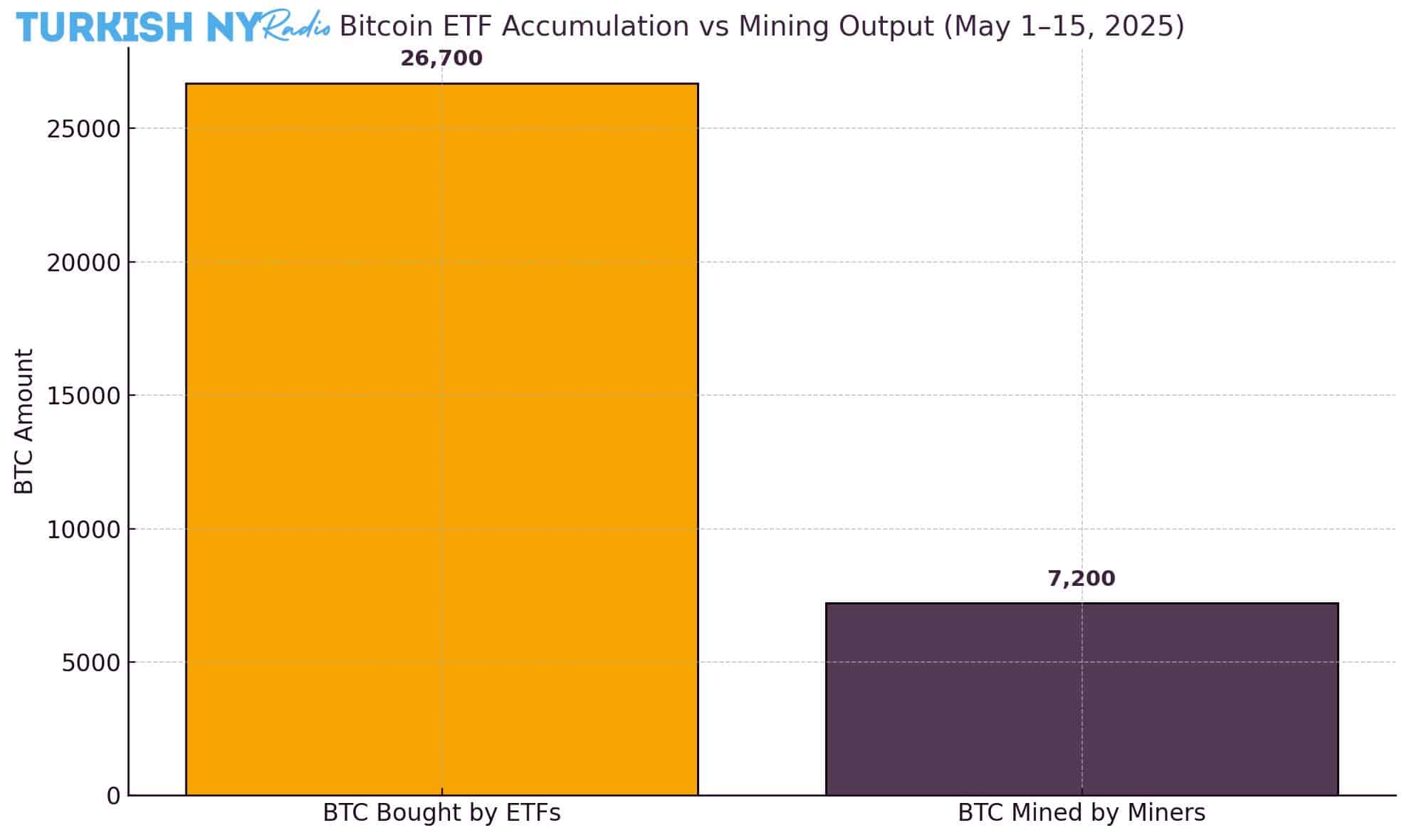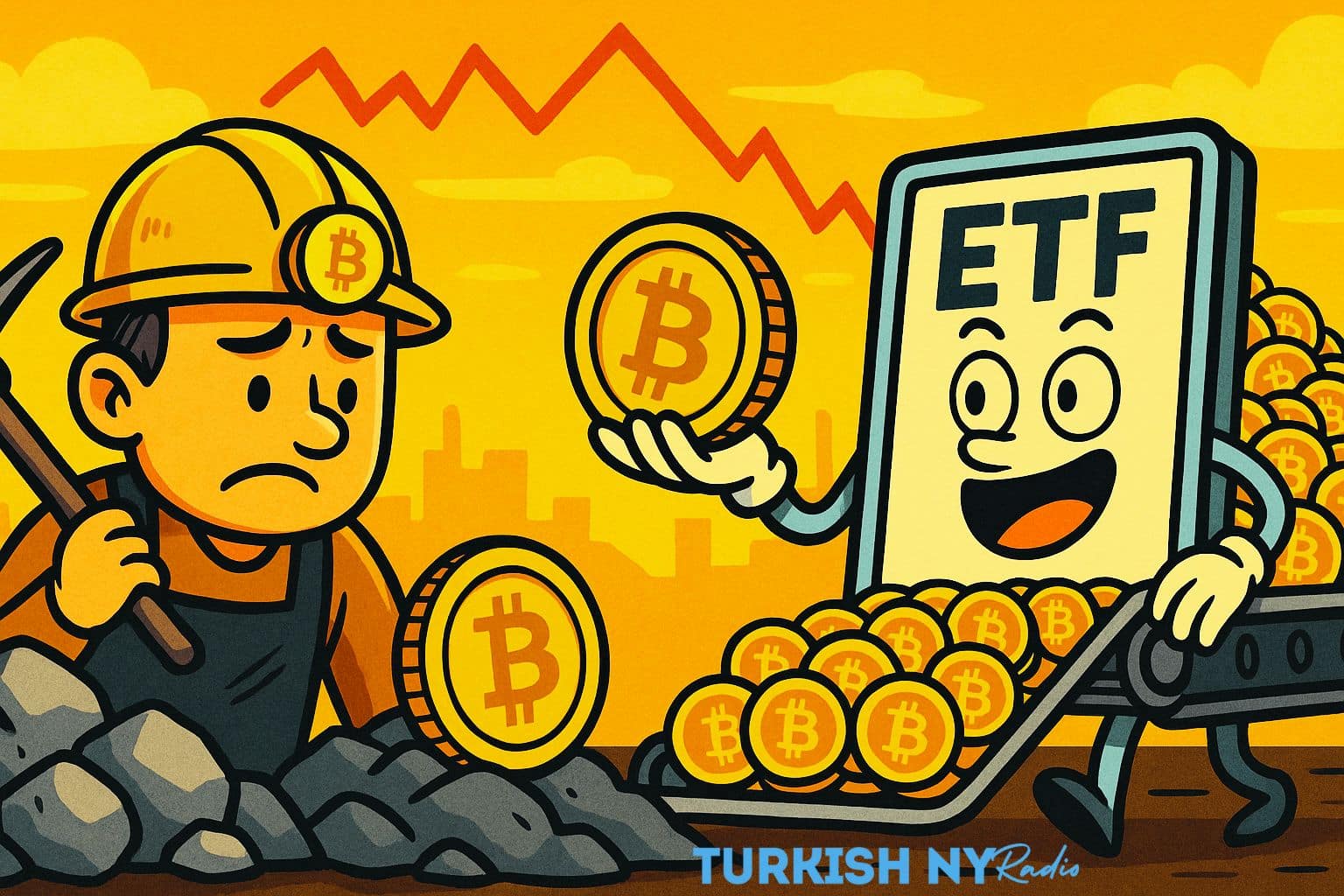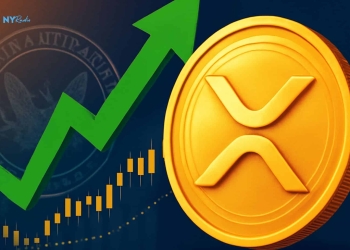According to Hodl15 Capital, from May 1 to 15, 2025, the Bitcoin ETF in the U.S. can obtain about 26,700 BTC, more than three times the 7200 BTC obtained in the same period.
This ramp-up of accumulation, driven by BlackRock and Wisd Capital, the digital assets investment arm of Fidelity, which acquired more than 16k BTC between them, has resulted in speculation of a looming supply squeeze.
Since the April 2024 halving, which coincided with a reduction in block rewards to 3.125 BTC per block, the daily issuance rate has decreased to around 450–480 BTC; yet, ETF demand has ballooned to over 1,700 BTC a day.
Analysts attribute the spike to macroeconomic factors and increasing faith in the long-term value of Bitcoin while noting sustained demand from institutions as a major catalyst for the market.
Bitcoin Price and Momentum Indicators Now
At the time of writing, Bitcoin is valued at around $102,906, down about 0.63% over the past 24 hours. Even with that retreat, the Fear & Greed Index is still at 74, an indication that both traders and institutions are still relatively optimistic.
Current technical analyses show that bullish sentiment is increasing, with resistance likely at around $108,000 and support at the $98,000 level. As ETF demand continues to trade well above supply, a breakout above these levels may spark a new rally.

Historical Inflows Reveal Strategic Accumulation Trends
The beginning of 2025 has seen consistent ETF inflows:
| Month | ETF Bitcoin Inflows (BTC) |
| January 2025 | 33,546 |
| February 2025 | 116,561 |
| March 2025 | 65,456 |
| April 2025 | 30,052 |
| May 2025 (to date) | 26,729 |
After a small outflow in the beginning of May, momentum is turning, however. ET displaying life above 8k By the middle of May, ETF accumulation had already surpassed the total of mining output. A phenomenon that would put price pressure higher in the coming weeks.
Analysts Are Predicting Higher Prices for BTC. Markets observers are betting on the value of BTC to remain high.
Analysts and industry experts have published pretty bullish predictions for Bitcoin in 2025, factoring in ETF assets under management, halving effects, and macroeconomic factors:
| Source | Predicted Price | Target Date |
| CoinCodex | $129,096 | May 23, 2025 |
| Anthony Scaramucci | $180,000–$200,000 | End of 2025 |
| MarketWatch Analysts | $150,000 | End of 2025 |
These are all supported by increasing on-chain activity, dwindling reserves on exchanges, and sustained ETF inflows even in the midst of short-term price corrections.
Community Conversations Spotlight Expected Supply Shock
Services like Reddit and X (formerly Twitter) have seen users question this imbalance between supply and demand and wonder what long-term effects it could have. A widespread post on Bitcoin stated:
“US spot Bitcoin ETFs have added 26,700 BTC in May, while miners have only mined 7,200 BTC… ‘Supply shock’ is not just a narrative; it is approaching”.
This has been echoed by blockchain analysts, who have noted that ETF demand could soon lead to a liquidity squeeze, especially as long-term holders slow down active selling activity.
Institutional Activity Rotating from Arbitrage to Accumulation
The most recent 13F filings with the U.S. SEC show that some of the biggest players, such as Abu Dhabi-based Mubadala Investment Company and Citadel Advisors, are adding more Bitcoin ETFs. This represents a change from previous arbitrage patterns, as institutions are now preparing for sustained directional gains.
More than $5.61 billion has gone into Bitcoin ETFs since April began; investors are growing bullish on the asset’s future prospects, even as the broader market is volatile.

Looking Ahead to 2025: Next Rally Could Be Driven by Supply Crunch
Current scenario Today, with sky-rocketing Bitcoin ETF inflows, declining miner supply, and rising institutional participants, we might see a similar run-up in the price of BTC in the latter half of 2025.
No matter how much you like to ride, if you stay in the game for times to come, penial demand for ETFs now exceeds daily supply by around 3x, and with macro headwinds turning macro tailwinds, analysts expect a rising, rising.
Exchange reserves continue to decline, and technical charts suggest the bulls have the upper hand. The aligning of supply structure and macro sentiment has caused buyers to front-run, expecting a new ATH.
Keep following us on Twitter and LinkedIn, and join our Telegram channel for more news.
Frequently Asked Questions
1. Why are Bitcoin ETFs snapping up more BTC than miners can provide?
Bitcoin ETFs have been on a tear amid increasing institutional demand, and the post-halving block reward cut reduced miner supply, leading to an expanding supply-demand imbalance.
2. How does this ETF demand affect Bitcoin price?
Demand driven by ETFs greater than supply can drive the price up—especially as you have fewer available BTC and as market sentiment becomes more positive over time.
3. Which Ethereum ETF led the way in this BTC accumulation trend?
BlackRock’s iShares Bitcoin Trust and Fidelity’s Wise Origin Bitcoin Fund are the largest contributors, purchasing more than 16,000 BTC in early May.
4. Could this result in a Bitcoin supply shock in 2025?
Yes, if ETF investment continues to outstrip newly mined supply, the added supply pressure could create a squeeze and price spikes and contribute to increased market volatility over the next five or so years.
Glossary of Key Terms
1. Bitcoin ETF (Exchange-Traded Fund).
ETFs are regulated investment products that allow investors to gain exposure to Bitcoin without actually holding the digital currency. They are traded on conventional stock exchanges and priced in line with the BTC market rate.
2. BTC Halving
An event that takes place approximately every four years, when the block rewards Bitcoin miners receive after mining a new block are automatically halved, slowing down the rate at which new BTC is issued and the pace of new supply entering the market.
3. Block Reward
The reward that BTC miners get after validating a block. After the April 2024 half, the reward fell from 6.25 BTC to 3.125 BTC.
4. Mining Output
The sum of Bitcoin mined per day. Currently, it’s around 450–480 BTC per day post-halving, which adds to Bitcoin’s deflationary model.
5. Institutional Investment
A massive influx of money from hedge funds, asset managers, and sovereign wealth funds into Bitcoin via vehicles such as ETFs, which is considered a sign of maturity in the market.
6. Supply Shock
Market situation where supply is dwarfed by demand. In a crypto space, for example, it can cause another rise in the price because of the scarcity of the tokens like BTC.
7. Hodl15 Capital
A crypto analytics and research company offering on-chain and ETF flow data, well known for its role in tracking institutional Bitcoin activity and investment conventions.
8. On-Chain Data
@100trillionusd Blockchain network real-time (wallet moves, exchange reserves) and de facto on-chain transaction volume—this is critical to forecast market behavior.
Sources












































































































